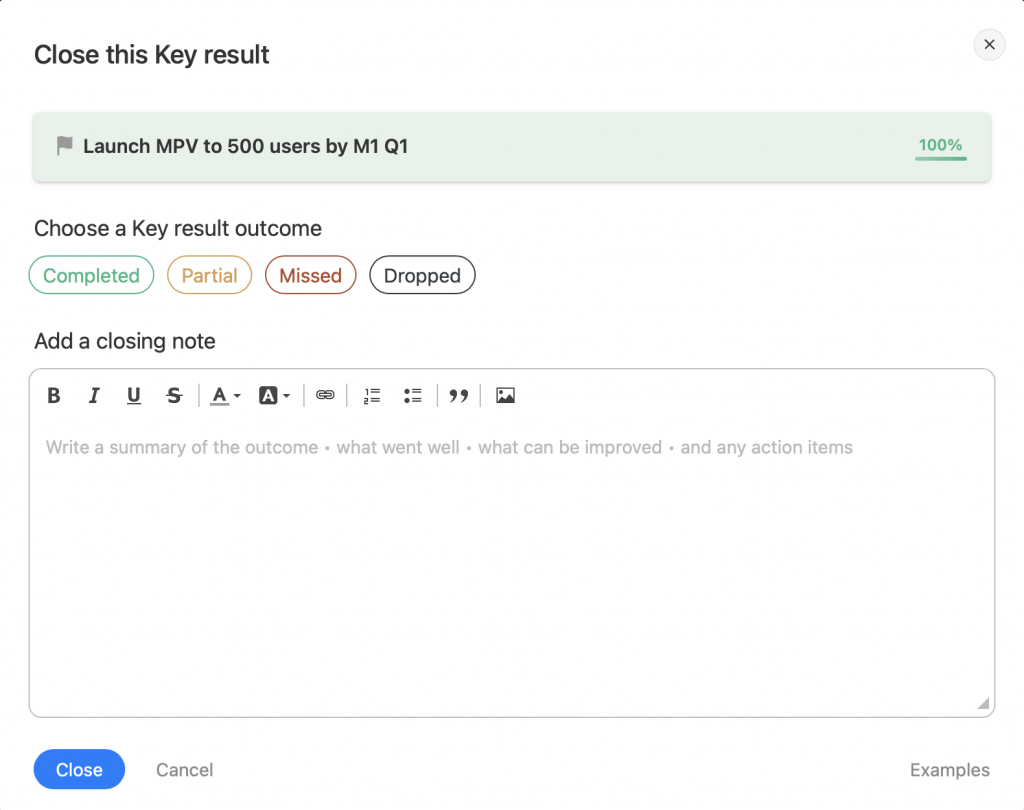Step 1: Choose a goal outcome
- Navigate to the goal or KR you want to close
- From the Menu choose “Close Goal” or “Key Result”
- Choose the right outcomes for the goal or key result

Completed
When teams achieve the Goal
Partial
When goal was nearly missed
Missed
When teams missed the Goal
Dropped
When the goal was reprioritised
When choosing an outcome, it is important to consider how committed vs stretch goals should be rated. See the table below which is often used by companies.
| % Complete of a Stretch Goal | Outcome |
|---|---|
| > 70% | Completed |
| 40%-70% | Partial |
| < 40% | Missed |
| % Complete of a Committed Goal | Outcome |
|---|---|
| 100% | Completed |
| 60%-99% | Partial |
| < 60% | Missed |
Step 2: Add a closing note
A closing note is a retrospective on the goal. It can include sections like What went well, What can we improve, What are we learning and action items.
Jump to other help articles
Can’t find what you’re looking for?
Write to us at feedback@thenorth.io,
Want to suggest a feature? – https://north.canny.io/
Before you start
What are OKRs?
OKR Meaning
History of OKRs
Benefits of OKRs
Are OKRs right for me?
OKR Mistakes to Avoid
A Brief Guide to OKRs
Aligning with OKRs
Strategic Planning
OKRs in Strategy
SMART, MBO, BHAG
Role of an OKR Champion
Take the OKR Quiz
The North Guide to OKRs
Getting started with OKRs
How North works
A typical OKR Cycle
Planning your OKRs
Weekly OKR Check-In
Stretch vs Committed OKRs
Aligning vs Cascading OKRs
Aligning OKR Teams
OKRs vs KPI
OKR vs KPI: with Examples
Input vs Output metrics
Good and Bad OKRs
OKRs and Agile
OKR Templates
Learning resources
Vision & Mission Templates
Google OKR Template
OKRs for Product teams
OKRs for CEOs’ teams
OKRs for Sales teams
OKRs for Marketing teams
OKRs with Google Workspace
North Features
Getting started with North
Org and Team goals
Goal Initiatives
Goal Check-ins
Give Awards
Goal Alignment
Our take on Product
OKRs for AARRR Metrics
On Product discovery
Communicating well
Metrics for Product teams
Telling stories with data
Data visualisation
🏔
